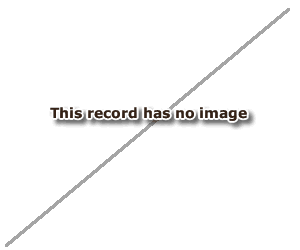Site of Anuak royal village

82 x 55 mm | Negative film nitrate
There are records relating to alternative images that we do not have scans for in the database:
1998.342.192.2 - Print gelatin silver , (82 x 55 mm)
1998.342.192.2 - Print gelatin silver , (82 x 55 mm)
Date of Print:
Unknown
Previous PRM Number:
EP.AK.192
Previous Other Number:
05 (280)
Accession Number:
1998.342.192.1
Description:
In the distance across the grassy plain can be seen a bank of raised ground and a line of thornwood and Balanites Aegyptiaca (date) trees, probably the site of the ancient royal village of Oko, a residence of the royal wives and children in a previous era.
It was situated on the other side of the Adongo watercourse from Umar, where younger wives lived.
Photographer:
Edward Evan Evans-Pritchard
Date of Photo:
1935 March - May
Region:
[Southern Sudan] Jonglei Oko
Group:
Anuak
PRM Source:
Edward Evan Evans-Pritchard
Acquired:
Donated 1966
Other Owners:
E. E. Evans-Pritchard Collection
Class:
Settlement , Topography , Vegetation
Keyword:
Village
Primary Documentation:
PRM Accession Records - Accession Book Entry [p.
98] 1966.27 [1 - 24] G[ift] PROFESSOR E.
E.
EVANS-PRITCHARD; INST.
OF SOCIAL ANTHROPOLOGY, 51 BANBURY RD.
OXFORD - 1966.27.19 - S.
SUDAN, DARFUNG.
VARIOUS TRIBES.
Box of negatives in envelopes, [1 - 242] & 1966.27.20 - Box of prints of these negatives [refers to object 1966.27.19] [1 - 242], in envelopes.
Note on negative m/s ink - "280"
Note on negative m/s ink - "280"
Other Information:
In The Political System of the Anuak of the Anglo-Egyptian Sudan (monographs on Social Anthropology no.4, London School of Economics, 1940) page 87-88, E.
E.
Evans-Pritchard notes that 'An hour and a half from Abetacan and half an hour from Akwaiyajwok there are two conspicuous mounds on either side of the Adongo watercourse.
They are strewn with pot sherds and must have been village sites over a long period.
One of them is covered with green grass fringed with heglig trees and is called Umar (Plate XI) ...
They formed the village of the nobles from the time they settled in the present country of the Anuak.
Umar was the residence of the younger wives of the king and Oko was the residence of the wives with children.' Comparison with the image of Umar in the collection [1998.342.68] the view is very similar, with a watercourse in the foreground and a low bank on the horizon.
However, since the treeline is somewhat different, this indicates that this image is probably Oko since the former can be identified with the image of Umar reproduced as Plate XI in The Anuak.
[Chris Morton 13/1/2004]
Recorder:
Christopher Morton 13/1/2004 [Southern Sudan Project]

